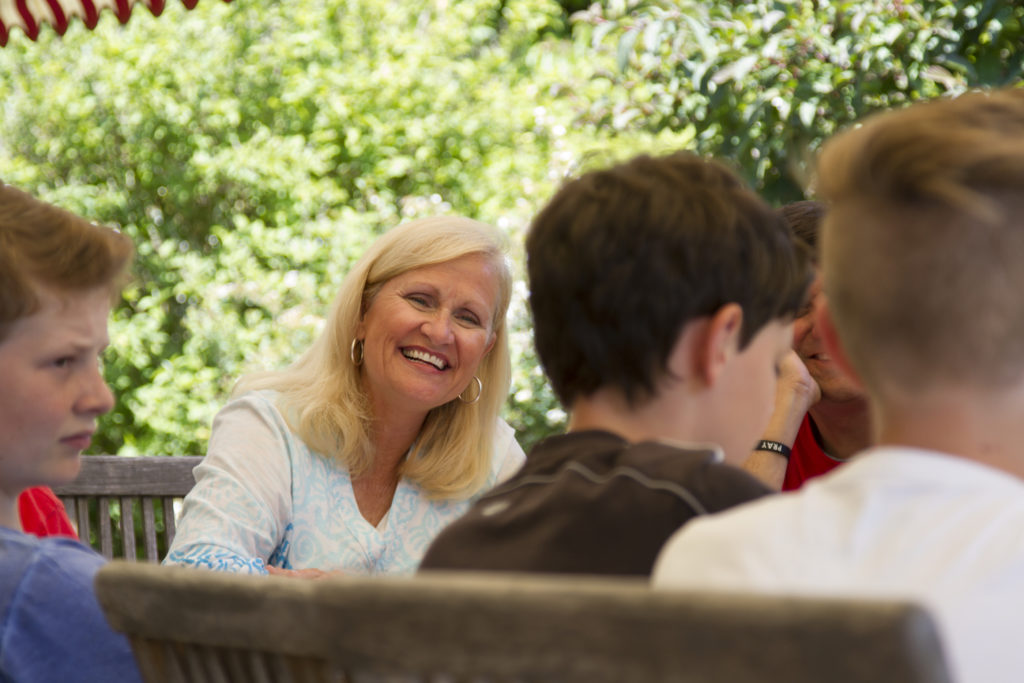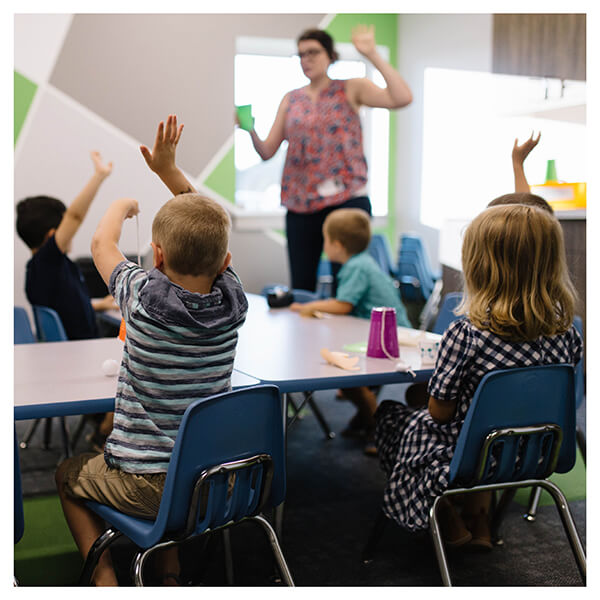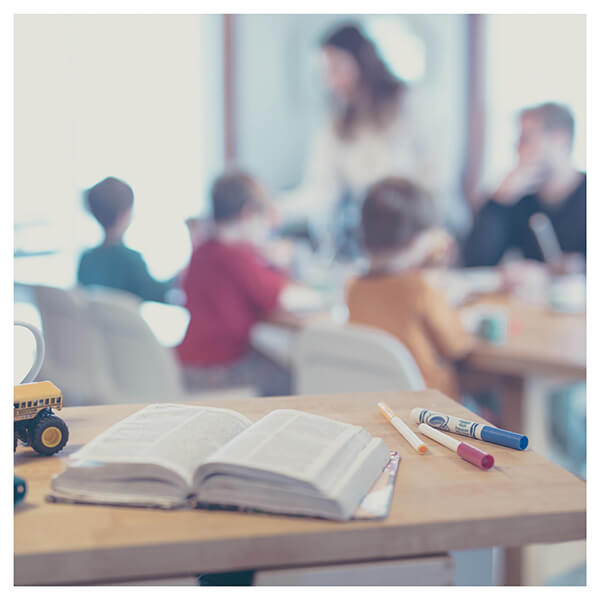At our church, our special needs ministry’s goal is to communicate the gospel to every child in a way they understand and in an environment where they feel comfortable. Because every child is unique, we have developed ISPs for each one—individualized spiritual plans! Similar to what the students have at school under their IEPs, our ISPs take into consideration their likes, dislikes, strengths, goals, and behaviors. We decide on the goals after we get to know the student and by talking to the parents about what goals they have while their child is with us at church.

In this post, I’ll share:
- how we determine ISP goals and placement for the student
- a rubric of ideas for spiritual goals
- how we communicate the goals with teachers and buddies
- when we assess the goals and make changes
- examples of goals and the modifications we make for the students
How we determine ISP goals and placement for the student
Our ministry serves any student who needs adjustments to the lesson or the environment to understand the message and feel comfortable. This includes children and teens who have special needs, learning disabilities, and mental health or behavioral diagnoses. This also includes children without any diagnosis but behavior that communicates a need for adjustments.
New families who know they will be part of our special needs ministry fill out an intake form that ask questions about what they enjoy, what causes stress, and what we need to know to care for them while they are with us (questions about mobility, communication, toileting, and allergies). We have a hybrid model of disability ministry at our church that includes buddies in the typical classes, sensory classes (similar to self contained classes in schools), and a reverse inclusion class for teens and young adults. We place a new student in the environment the student and parents feel most comfortable with to start off. We usually spend a couple weeks observing the student before we set the goals. The student and the parents can be part of the goal setting process if they’d like to!
A rubric of ideas for spiritual goals
When setting the goals for the student, we remember the #1 goal—the gospel! Everything is for the purpose of the student being able to hear and respond to the gospel. The goals at school, therapy, and home will meet a variety of needs for the students, so it’s important we stay focused on our goal because the student is with us for such a short time compared to how much time he/she spends other places.
Here are some of the goals we have used for students in different areas:
Scripture memory:
- Repeat a Bible memory verse each week
- Fill in the blanks of a Bible memory verse using words or pictures/PECS
- Use communication device/sign language to complete memory verse
Prayer:
- Pray with prompting
- Repeat a simple prayer (like at snack time)
- Sit quietly during prayer time and listen
- Share prayer requests (when appropriate)
- Lead group prayer
- Pray for friend who shares a request
Social/behavior goals:
- Identify by name friends and helpers at church
- Participate in class discussion with respect (taking turns to let everyone talk)
- Speak kindly to friends and helpers
- Participate in game time on a team or with friends (remembering to follow the rules and have good sportsmanship especially when frustrated or disappointed)
- Keep hands to self
- Play appropriately with toys and objects in the room (no throwing)
Music time:
- Listen to the music
- Play instruments
- Learn the words and motions to the songs
- Be a leader during song time
Lesson time:
- Look at books and pictures that go along with the Bible story
- Identify people in the stories by pointing (with or without assistance)
- Put together puzzles that go along with the Bible story (with or without assistance)
- Complete a modified activity sheet (examples- has a word bank when filling in blanks or shares answers verbally instead of writing them out)
- Tell your buddy or parent the main idea of the lesson or one thing learned
How we communicate the goals with teachers and buddies
For student in our sensory room, we create bio sheets that we put on the bulletin board or have available in a folder for quick access. For students with buddies, we have the same information printed out and in a lanyard that is kept in the buddy bag for quick reference.
The bio sheets/lanyards include:
Name: (include picture on bio sheets)
Parents’ names:
Parent contact info:
Allergies/medical issues:
Likes:
Dislikes:
Spiritual Goals:
Additional Info:
Student’s Schedule:

Here’s what the bio sheet looked like for my son James when he was younger:
James Peoples (with his picture so new volunteers can get to know him quickly)
Parents: Pastor Lee & Sandra
Contact info: (my phone number here)
Allergies/medical issues: None
Likes: tickles, puzzles, swinging, trains, music, snack time
Dislikes: waiting, loud noises, coloring/writing
Spiritual Goals: for James to hear that Jesus loves him, repeat a Bible memory verse each week, pray with prompting, identify by name friends and helpers at church, and learn the words and motions to the songs we sing
Additional Info: goes to the bathroom independently
James’s Schedule: in the sensory classrooms both hours
When we assess the goals and makes changes
The student or parents can let us know they’d like to talk about a change any time. We reflect on the goals and talk about changes when it’s time for a transition between classes or ministries (like from children’s ministry to youth ministry). This doesn’t have to be a formal process. We often all agree that a student needs more independence or raised expectations and then we try it out for a few weeks to see how it goes.

Examples from our students
Here are examples from students we serve. I included their goals and some of the modifications we make to help them meet those goals! (I changed the names and some of the identifying details for privacy!)
Nathan (8 yo) has autism level 1 and sensory processing disorder. His goals include participating in discussion with respect, completing activity sheet with assistance, sharing a prayer request when it’s his turn, telling his buddy/parents one thing he learned. Nathan has made a profession of faith & been baptized, so he remembers the Holy Spirit is always helping him. He has a buddy who uses a buddy bag with fidgets, a visual schedule, and he can ask that buddy to take a walk with him when he needs a break in the sensory room.
Brittani (5 yo) has CP. She is nonverbal and uses a wheelchair for mobility. She will hear that Jesus loves her, participate in music time, look at books and pictures that go along with the Bible story and identify people in the stories by pointing (with assistance), put together puzzles that go along with the Bible story (with assistance). Brittani is in our self-contained class and joins the typical class for song time or other activities she enjoys. Her peers know they can talk to her and encourage her, but they are careful not to be too active around her and bump her chair (she is often sleepy and easily startled).
Dave (16 yo) has dyslexia and social anxiety/embarrassment. David is in the typical class in the youth group. He isn’t called on to read out loud. His teachers look out for times he’s reluctant to join group activities and either help him enter a group or ask him to help them with a task. (When he was younger, his goals included completing a modified activity sheet: examples- he has a word bank when filling in blanks or he shares answers verbally instead of writing them out)
Jayce (14 yo) has level 3 autism (functionally nonverbal), intellectual disabilities, and anxiety. He is in our teenage/young adult reverse inclusion class. His goals include hearing that Jesus loves him, participating in the lesson time (Access curriculum), repeating a memory verse or main idea, and being kind to his teacher and friends. He follows a visual schedule, can request breaks, and has access to fidgets in the room.
More helpful resources:
- Sample forms (including adult and teen volunteer applications)
- Supporting Students with Invisible Disabilities (blog post)
- Amazon list with sensory items for buddy bags


